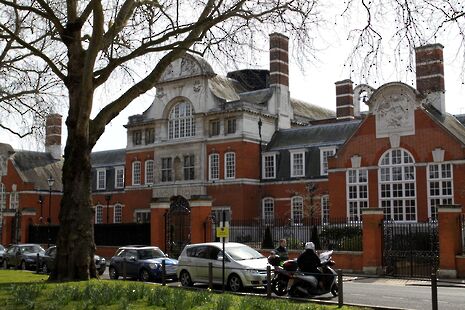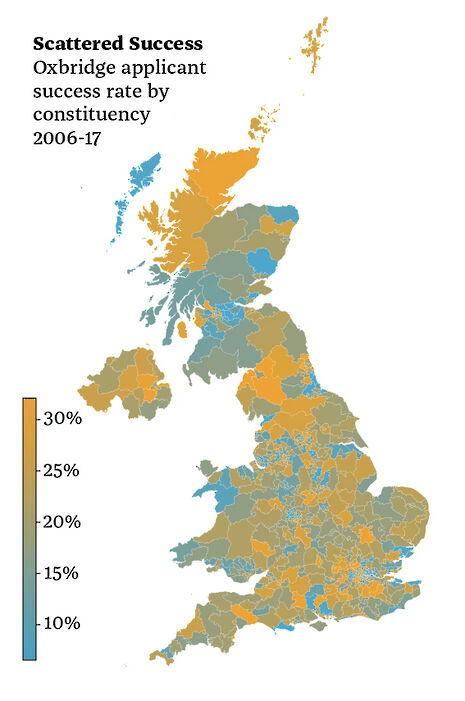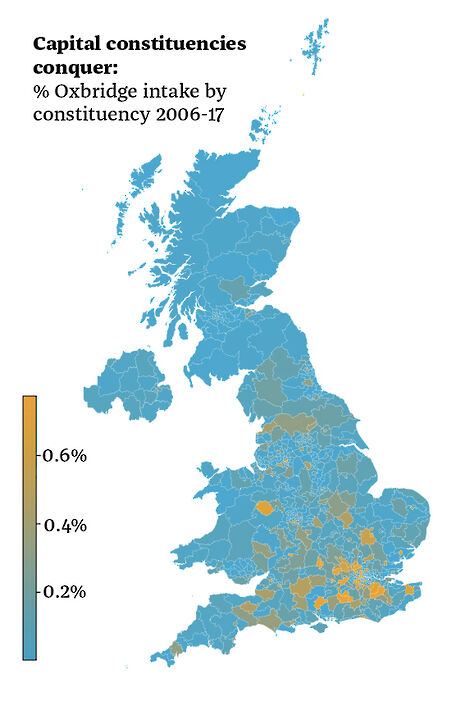Nearly half of Oxbridge entries from top 3.5% of schools
Of a total 4,041 schools which had students apply to Oxbridge over the past 11 years, there were 2,974 schools that sent only ten or fewer students

Over 1,140 schools sent no students to Oxbridge between 2006 and 2017 despite their students having applied, a Varsity investigation reveals. This is compared to more than 6,000 students admitted from the top ten schools for Oxbridge admissions over the same time period.
Students from the top schools made in excess of 15,800 applications to the two universities. Of a total of 4,041 UK schools that had students apply, there were 2,974 schools that sent only ten or fewer students to Oxford or Cambridge in the same time period.
On the other hand, there are 143 schools that have sent 100 or more students to Oxbridge in the same eleven-year period, representing just over 3% of applying schools but making up 44% of the total Oxbridge cohort over the time period. The top two applying schools were Eton College and Westminster School, which have respectively seen 910 and 951 students attend the two universities.
The top ten schools for Oxbridge admissions in the state sector had 3,566 students accepted by Oxbridge over the 11 year period.

CUSU Access and Funding Officer Shadab Ahmed, told Varsity: “One of the largest problems with outreach is the difficulty in reaching certain populations within the UK, often a result of lack of teacher engagement ... Supporting a handful of students in the application process to selective universities is not seen to be cost-effective in schools under real funding constraints.
“Universities should continue to lobby the government to provide adequate funding to primary and secondary schools to allow them to support students, as well as ensuring that policy mitigates fundamental differences between children on the basis of socioeconomic demographics."
Admission statistics for the 2016 cycle, released earlier this year, placed Oxford and Cambridge in the bottom five in the UK with respect to the proportion of students admitted from areas of low participation. However, the two universities have seen some improvement in their access figures, with Cambridge admitting 4.5% of students from areas of the lowest participation in 2017, compared to around 3.2% in 2016.
Senior Pro-Vice Chancellor for Education, Graham Virgo, told Varsity last month that, “we work incredibly hard to ensure the very best students are being admitted to Cambridge.” He added, “we work very hard in the access and widening participation area and we have made very significant improvements in terms of what we are doing and the success by which we are doing it.

“I can see over the last [five to six] years in particular very significant improvements. There is more that can be done and we are well aware of that.”
Cambridge recently announced a £500m fundraising campaign for student support, part of which will go towards a foundational year and a bridging course, to be rolled out in 2021. The hope is that the two programmes will help both improve the success rates of students applying from disadvantaged areas as well as boosting the numbers applying.
Similar schemes are already running in some Oxford colleges, namely Lady Margaret Hall and University College. Senior staff from both colleges told Varsity last month that they have since seen an increase in the number of applications from students from disadvantaged backgrounds.
Last week, The Oxford Student revealed that two Oxford colleges, Wadham and Brasenose, offer some scholarships exclusively to privately educated students.
And earlier this month, award-winning grime artist, Stormzy claimed that the University of Oxford rejected his offer to fund black students at the university to widen access and diversity, which the University has denied.
“I’m never going to criticise anybody for putting the spotlight on us and saying you should do more,” Virgo said.
“What I will say is, seeing it from inside and knowing how colleges and the University take this so seriously, there are times when I get very concerned about some of the coverage that does not reflect on what hundreds of people are doing, including students, academics and [other] members of staff regarding access and widening participation.”
 Interviews / You don’t need to peak at Cambridge, says Robin Harding31 December 2025
Interviews / You don’t need to peak at Cambridge, says Robin Harding31 December 2025 News / Unions protest handling of redundancies at Epidemiology Unit30 December 2025
News / Unions protest handling of redundancies at Epidemiology Unit30 December 2025 Comment / What happened to men at Cambridge?31 December 2025
Comment / What happened to men at Cambridge?31 December 2025 Features / ‘Treated like we’re incompetent’: ents officers on college micromanagement30 December 2025
Features / ‘Treated like we’re incompetent’: ents officers on college micromanagement30 December 2025 Theatre / We should be filming ADC productions31 December 2025
Theatre / We should be filming ADC productions31 December 2025









